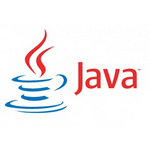function函数是javascript的基础也是实现功能的一个引爆点,我们通过实例分析让你对function函数有一个更加深刻的理解以及在实际中的用法讲解。本文主要为大家带来一片关于javascript的基础教学内容,关于function函数的训练与理解,一起学习下吧。
Function 确实是一个对象.而我们定义的任何一个函数其实都是Function 对象的一个实例,也可以理解为指向 Function 对象的一个实例.
既然是对象的一个实例,那肯定指向了Function 类型的一个引用. 既然指向了一个引用类型的内存地址,那你也可以简单的把我们定义的函数理解为一个变量,这个变量指向了一个引用类型的地址,这个地址指向了Function 对象的一个实例.
既然我们定义的函数其实是一个变量,那这个函数实例地址可以同时指向多个变量.
看下面的代码:
立即学习“Java免费学习笔记(深入)”;
var add = new Function("n", "m", "return n + m");
上面是标准的函数定义,调用了Function对象的构造函数,这个构造函数把前面的N个参数都默认为新函数的参数,直到最后一个参数认为是新函数的函数体.
从上面的语句中非常直观的看到 add这个变量指向了一个Function 类型的实例,但是这种命名方法非常繁琐,等价于:
(1)函数表达式
var add=function(n,m){
return n+m;
}(2)函数申明
function add(n,m){
return n+m;
}由于javascript语言中的申明提前,所以一版提倡用第二种方法定义函数,关于函数申明提前单独开辟一篇来说
但是第一种定义方法让人很直观看到 add 是一个指向函数实例的一个变量.
既然是一个变量,就可以赋值给其他变量,可以当做参数在函数中传递,也可以从函数返回.
所以 var add2=add3=add; 现在 三个变量都指向了这个实例的引用, 现在 add=null; 以后 add2,add3 俩个函数完全可以使用不受影响,因为add 移除函数对象的引用后指向了null的引用.所以根本不影响add2 和 add3 两个函数.
所以函数可以当做其他函数的参数传入.
所以函数可以当做函数的返回值返回.
因为函数名只是一个指向函数实例的变量,所以javascript中函数不会有 重载,因为相同的变量指向的是相同的引用地址.最后表示的还是同一个函数.
函数既然是对象的实例,那么就应该有属性,就应该有方法.所以javascript中的 函数有属性也有方法.
比较重要的4个属性 arguments , this , length , prototype
arguments 表示当前函数的参数类数组,这个属性很特殊,他自己还有个属性叫 callee ,
arguments.callee 属性保存了一个指针,指针指向了拥有此 arguments 属性的函数实体(也就相当于函数名)
this属性是当前环境,类似与C# 中的this,表示当前上下文
length 属性表示当前函数接收最大参数个数
prototype 表示该函数的原型,也就是把对象实例的方法完整的保存下来,换句话说就是原型上的方法都继承下来了.比如 toString() valueOf() 等.
接下来,我们来看看function函数种类
普通函数:介绍普通函数的特性:同名覆盖、arguments对象、默认返回值等。
function ShowName(name) {
alert(name);
}匿名函数:介绍匿名函数的特性:变量匿名函数、无名称匿名函数。
//变量匿名函数,左侧可以为变量、事件等
var anonymousNormal = function (p1, p2) {
alert(p1+p2);
}
anonymousNormal(3,6);//输出9闭包函数:介绍闭包函数的特性。
function funA() {
var i = 0;
function funB() { //闭包函数funB
i++;
alert(i)
}
return funB;
}
var allShowA = funA(); //全局变量引用:累加输出1,2,3,4等
function partShowA() {
var showa = funA();//局部变量引用:只输出1
showa();
}相关推荐:
register_shutdown_function函数的详细介绍
javascript Function函数理解与实战_基础知识
Javascript中function函数bind方法实例用法详解
以上就是javascript Function函数理解与实战的详细内容,更多请关注php中文网其它相关文章!

java怎么学习?java怎么入门?java在哪学?java怎么学才快?不用担心,这里为大家提供了java速学教程(入门到精通),有需要的小伙伴保存下载就能学习啦!

Copyright 2014-2025 //m.sbmmt.com/ All Rights Reserved | php.cn | 湘ICP备2023035733号